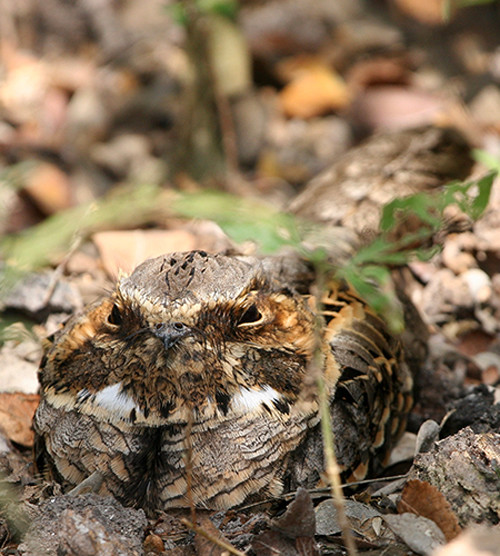 By Colleen Hook, Executive Director at Quinta Mazatlan
By Colleen Hook, Executive Director at Quinta Mazatlan
One of the most near-perfect camouflaged birds is the Common Pauraque. The Pauraque has an understated beauty marked in brown-black and grey patterns and can just “disappear” on the Thornforest floor. While Pauraques are an adaptable species, they need forests to live and will leave areas that are heavily built up. Forests are important for many reasons from providing homes, to providing food, medicines and helping us breathe and keep cool.
Pauraques are unlike most other birds, as they really don’t construct nests. They make a scrape in the ground and lay eggs on the Thornforest floor on fallen leaves. A clutch consists of 1-3 eggs which are pink colored with buff spots. Incubation takes about 20 days and is carried out by both parents.
Their family name, Nightjars, define their adaptations of hunting at night for insects. Their eyes are placed on each side of the head to significantly increase their visual field. There are six species of Nightjars commonly seen in North America, all of which have been found in Texas. They are named for their calls like Whip-poor-will and Chuck-wills-widow. The Pauraque call really doesn’t sound like their name “Pah-Raah-Key”. It sounds more like a blurred whistle, Pur-WHEEEER Pur-WHEEEER Pur-WHEEEER. Maybe the Spanish name “Pucuyo” is a better rendition of the sound.
Maybe the call of the Pauraque is saying “Who-R-You Who-R-You Who-R You? Which leads us to the Camo Wisdom for the Day, “Just BE Who You Want to BE, Not What Others Want to See”. Enjoy birding with your family. Follow Quinta Mazatlán on Facebook, Twitter, Instagram, and Youtube @QuintaMazatlan to learn more about our natural and cultural heritage in the Rio Grande Valley of South Texas.













